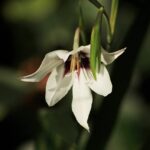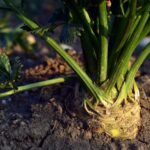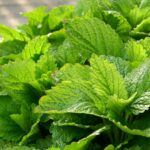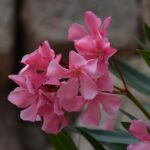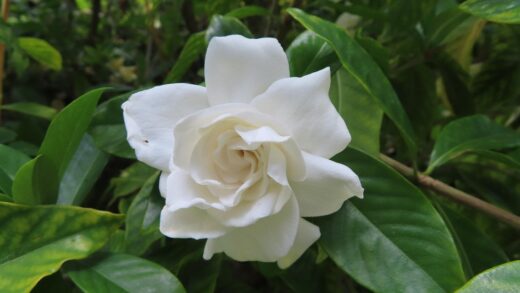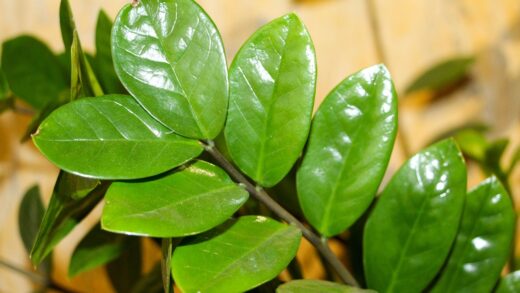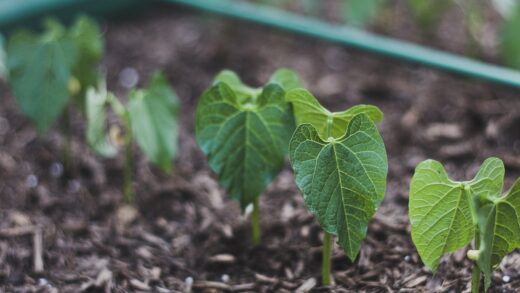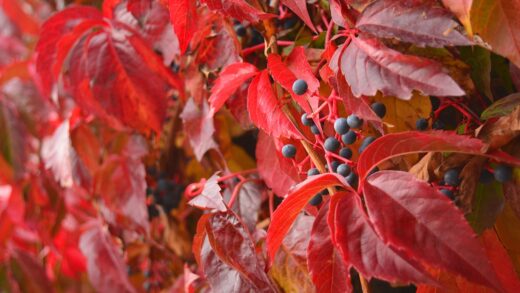Snow-on-the-mountain is a true annual plant, meaning it is genetically programmed to complete its entire life cycle—from germination to flowering and seed production—within a single growing season. It has no natural mechanism for surviving freezing temperatures, and the arrival of the first hard frost in autumn will invariably kill the plant. Therefore, in the traditional sense, overwintering the plant itself in the garden is not a feasible option in any climate that experiences a true winter. Understanding this annual nature is key to managing expectations and planning your garden strategy accordingly. The focus for this plant is not on preserving the individual but on ensuring its return the following year, primarily through its seeds.
The plant’s strategy for survival is prolific self-seeding. Throughout the late summer and early autumn, it produces a multitude of small seed pods. When these pods mature and dry, they burst open, scattering seeds over a wide area. These seeds are hardy and can easily survive the winter cold while dormant in the soil. The following spring, as the soil warms, these seeds will germinate, and a new generation of plants will emerge, often in greater numbers than the year before. This natural cycle is the plant’s intended method of “overwintering.”
For the gardener, this means that the primary method of ensuring a display next year is to simply allow the plant to complete its life cycle. If you appreciate a more natural, cottage-garden look, you can let the seeds fall where they may and then thin out the resulting seedlings in the spring to your desired spacing. This is the lowest-effort method and often results in a beautiful, spontaneous arrangement. The plants have a knack for finding suitable spots to grow, and the resulting display can be quite charming.
However, if you prefer more control over your garden design, you can actively participate in this process. Instead of letting the plant self-seed randomly, you can collect the mature seeds yourself in the autumn. This allows you to save them over the winter and sow them precisely where you want them the following spring. This approach gives you the reliability of the plant’s return without sacrificing the intentionality of your garden layout.
Understanding its annual nature in colder climates
In regions with cold winters and freezing temperatures, snow-on-the-mountain must be treated as a classic annual. Its botanical makeup lacks the adaptations necessary for perennial survival in such climates, such as a dormant root system or woody stems capable of withstanding a hard freeze. The plant’s cells will rupture when frozen, leading to the rapid death of all its vegetative parts—leaves, stems, and roots. This is a fundamental aspect of its biology that cannot be changed through cultivation practices in the garden.
More articles on this topic
Accepting its annual life cycle allows for better garden planning. Instead of attempting futile efforts to protect the plant from frost with covers or mulch, which will not save it, the gardener’s focus should shift to end-of-season cleanup. After the first killing frost has turned the plants black, it is best to remove them from the garden. This tidies the space for winter and, more importantly, removes any dead organic matter that could potentially harbor disease or pests over the cold months.
This annual characteristic is not a drawback but rather a feature that offers flexibility in garden design. Each year presents a new opportunity to decide where to place your snow-on-the-mountain for the best effect. You are not tied to a permanent location as you would be with a perennial shrub or flower. This allows you to rotate your plantings, experiment with new combinations, and refresh your garden’s look from one season to the next, using the plant as a dynamic and versatile design element.
Furthermore, its status as a reliable self-seeding annual means you can often get the beauty of a returning plant without the long-term commitment of a perennial. Many gardeners find a happy medium, allowing a patch to self-sow while also collecting some seeds to start in new areas. This combination of planned and spontaneous growth can lead to some of the most delightful and natural-looking garden displays, embodying a relaxed and collaborative gardening style.
The possibility of overwintering in containers
While overwintering snow-on-the-mountain outdoors in a cold climate is impossible, it is theoretically possible to keep a plant alive through the winter by bringing it indoors in a container. This is a challenging endeavor and is not a common practice, as the plant does not make a particularly good houseplant. Its high light requirements are very difficult to meet indoors during the short, dark days of winter. However, for a dedicated and curious gardener, it can be an interesting experiment.
More articles on this topic
To attempt this, you would need to pot up a healthy, compact plant from the garden before the first frost. Choose a smaller specimen, as large, established plants do not transplant well. Place it in a container with excellent drainage and a standard potting mix. It is crucial to inspect the plant thoroughly for any pests, such as aphids or spider mites, before bringing it inside to prevent an infestation from spreading to your other houseplants.
The biggest challenge will be providing adequate light. A standard windowsill, even a south-facing one, is unlikely to provide the intense, direct sunlight the plant needs to thrive. Without sufficient light, it will become weak, spindly, and lose its variegation. To be successful, you would almost certainly need to place the plant under powerful, full-spectrum grow lights for at least 12 to 14 hours per day. This is a significant commitment of resources and energy.
You would also need to adjust your care routine for indoor conditions. Water the plant only when the top inch or two of soil is dry, as overwatering is a major risk indoors. Avoid fertilizing during the winter months, as the plant’s growth will naturally slow. Even with perfect care, the plant may struggle. Given the ease of growing new plants from seed each spring, this method is generally considered more trouble than it is worth.
Preparing container plants for indoor storage
If you decide to take on the challenge of trying to overwinter a potted snow-on-the-mountain indoors, preparation is key to giving it the best possible chance of survival. The process should begin several weeks before the first expected frost date in your area. Start by selecting the healthiest and most compact plant you can find. A plant that is already in a pot is a much better candidate than one that needs to be dug up from the garden, as this avoids the significant stress of transplanting.
Before bringing the plant indoors, it needs to be acclimated to the lower light levels it will experience inside. If the pot has been sitting in full sun, move it to a progressively shadier spot over the course of a week or two. First, move it to a location that gets only morning sun, then to a bright, shaded patio or porch. This gradual reduction in light intensity helps to prevent the shock and leaf drop that can occur when a plant is moved abruptly from high to low light.
This is also the time for a thorough pest inspection and treatment. Examine the stems, the tops and undersides of the leaves, and the soil surface for any signs of insects. It is a good practice to proactively treat the plant before it comes inside. You can spray the entire plant, including the soil, with a gentle insecticidal soap or horticultural oil. This can help to eliminate any unseen eggs or pests that could multiply rapidly in the warm, stable indoor environment.
Finally, just before its final move indoors, you may want to prune the plant back slightly. Trimming some of the longer stems can help to create a more compact, manageable shape for its indoor stay. Make sure you are wearing gloves to protect yourself from the sap. Once inside, place it in its designated spot under grow lights and be prepared to monitor it closely as it adjusts to its new, artificial environment for the winter.
Collecting seeds for the next season as an alternative
By far the most practical, reliable, and rewarding method of ensuring you have snow-on-the-mountain in your garden next year is to collect its seeds. This simple task is a much more effective use of your time than attempting to keep the plant alive indoors. Seed collection allows you to preserve the plant’s genetics and gives you complete control over where and when you plant it the following season. It is the method that works in harmony with the plant’s natural life cycle.
The time to collect seeds is in the late summer or early autumn, as the plant’s tiny flowers fade and the seed pods begin to form and mature. The pods are small, three-lobed capsules located at the base of the flowers. You must wait until these pods have turned brown and started to dry, but you need to collect them before they split open and disperse the seeds themselves. This can require regular monitoring, as not all pods will mature at the same time.
To harvest the seeds, you can either snip off the individual dry pods and place them in a paper bag, or you can cut entire stems and hang them upside down inside a large paper bag. As the stems and pods continue to dry indoors, the pods will burst and the seeds will be safely collected in the bottom of the bag. This method is often easier and ensures you capture the seeds from any pods that pop open unexpectedly.
Once the seeds are collected and separated from the chaff, allow them to air dry completely for another week or so to prevent mold. Then, place them in a clearly labeled paper envelope or a small glass jar. Store the seeds in a cool, dark, and dry place until the following spring. A refrigerator is an ideal storage location. This simple act of collecting and saving seeds ensures a bountiful supply of new plants, connecting you directly to the timeless rhythm of the gardening year.







